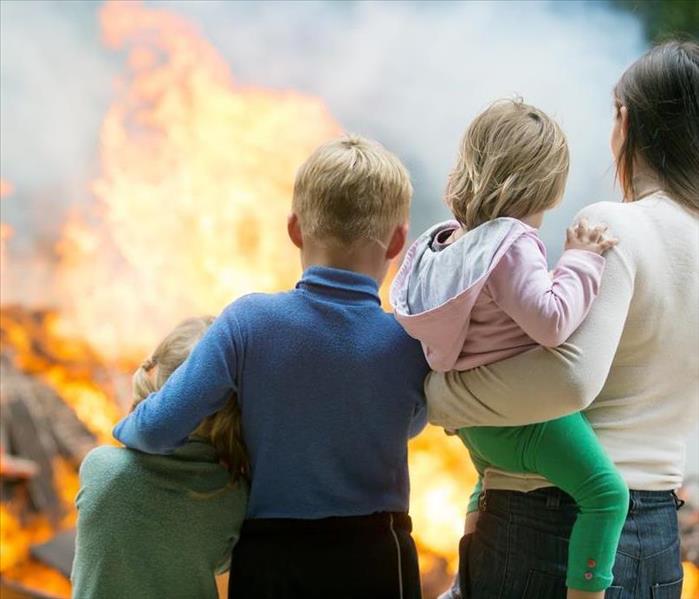4 Critical Kids Safety Lessons for Escaping a House Fire
3/16/2022 (Permalink)
The National Fire Protection Agency notes that approximately 26% of blazes happen within a residential structure. These events are often sudden and quick, leaving little time to locate each other and discuss options. In addition, the situation proves trying for the youngest with Stanford Children's Health citing that almost 500 kids 14 and young die from the conflagration each year. Kids safety is essential and on the line.
How can homeowners safeguard their loved ones from harm?
Many adults likely remember cherished lessons of fire safety within schools. That information should also occur within the home. Parents can make a difference by taking a proactive approach to educating their little ones. The following are four critical survival tips to work on as a family.
1. Plan Out Kids Safety Efforts
Parents in Pueblo, CO, should sit down with their youth, creating a viable escape plan. Even little kiddos must know how to react since flare-ups could separate members. In addition, working through the big picture together allows adults to answer and clarify questions; plus, it minimizes the chance of confusion.
Discuss escape routes. Pick out several, drawing a map for your children to see. Walk through the paths, explaining that no one should go back inside or deviate from the designated walkway. Don't wait for others. Instead, plan a spot to meet up outside. Once there, adults can call authorities, insurance and a local fire remediation team.
Practice this plan frequently to ensure everyone remains on the same page.
2. Explain the Value of Smoke Detectors
When the alarm goes off at school, kids know the drill. Line up and leave. During a home fire, children should listen and react to smoke detectors. Show the device, and talk about how it works. The residence should have them throughout the property. When it notices smoke is in the building, the unit emits a loud sound, signaling a warning. Be sure that kids follow the family's escape guide if they hear the noise.
3. Review How To Handle Smoke and Heat
While some safety departures may occur with clear air and ease, others involve kids moving through smoke and increased temperatures. These changes require specific measures. Teach your children about how smoke moves to higher ground, so it's best to remain as low as possible. Show them specific positions such as crawls on the stomach or knees to protect them from excess smoke.
During a fire escape, little ones should avoid relying on their eyes. Instead, they need to feel around the room, checking door handles for excess heat. Consider playing a blindfold game, allowing your loved ones to move about the room, learning to find their way out without their eyesight. At times, alert them to hot doors and ask them to find another possible exit.
4. Open Windows, and Try Out Ladders
If a blaze blocks an exit, youth must adjust. Try out window escapes. Can you kids open it up? Do they know how to find the ladder or make a white signal flag for location? Pick days to run through these drills.
When a residential fire strikes, it's imperative that young ones know how to react. Adults can prepare them for these nerving times by putting kids safety first and setting aside time to talk about escape plans and have practice drills.





 24/7 Emergency Service
24/7 Emergency Service
